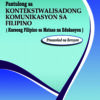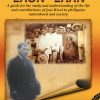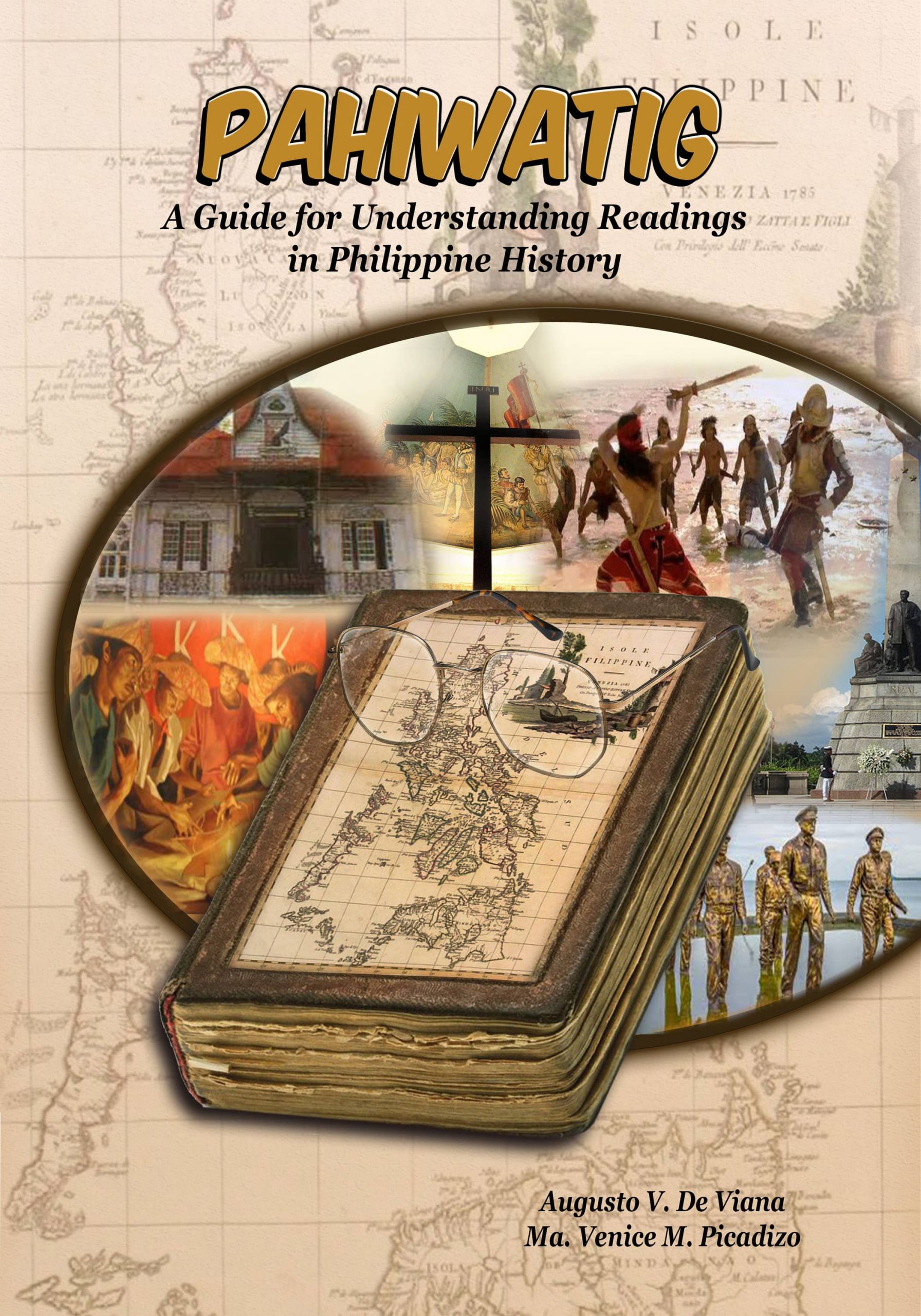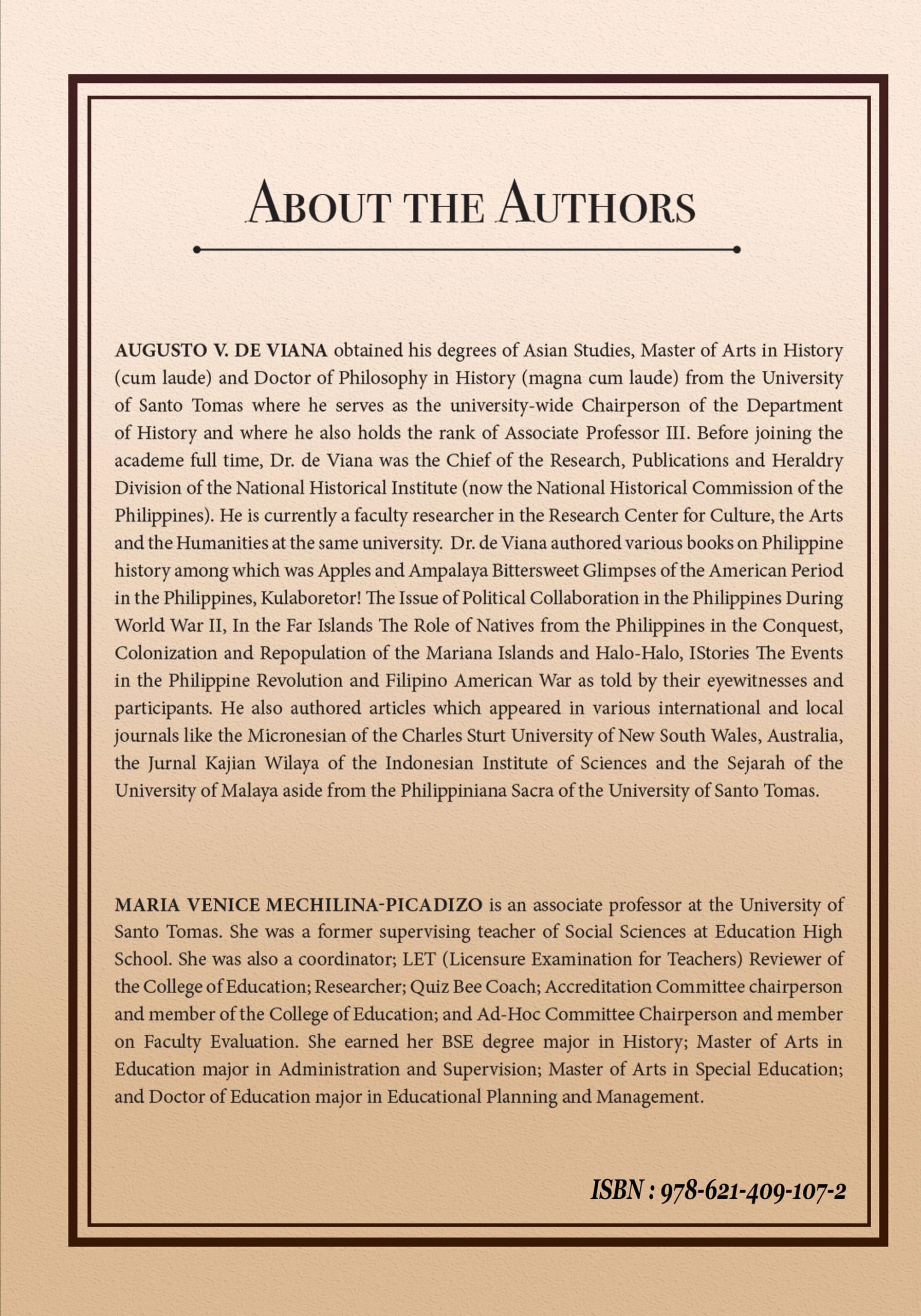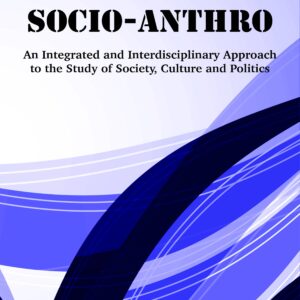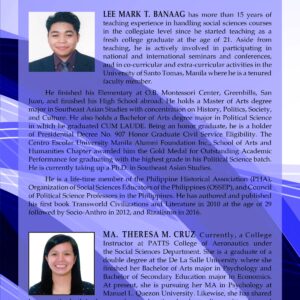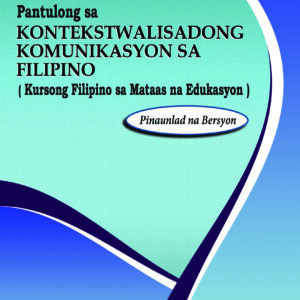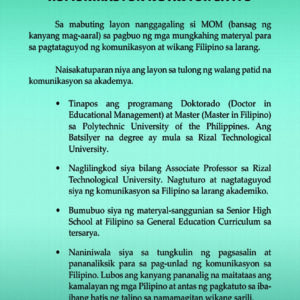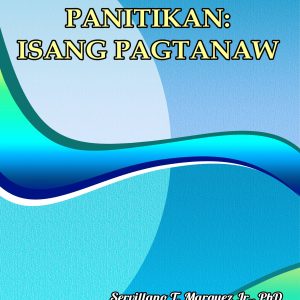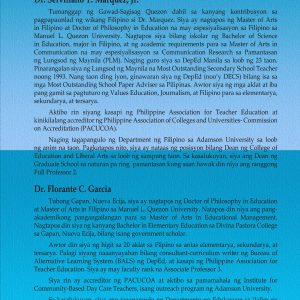Pahiwatig – A Guide for Understanding Readings in Philippine History
₱475.00
ISBN: 978-621-409-107-2
Author: AUGUSTO V. DE VIANA, Ph.D.
MA. VENICE M. PICADIZO, Ed.D.
Description
ISBN: 978-621-409-107-2
Author: AUGUSTO V. DE VIANA, Ph.D.
MA. VENICE M. PICADIZO, Ed.D
Additional information
| Book Type | Hard Copy, e-book |
|---|
Table of Contents
TABLE OF CONTENTS
Chapter 1 : introduction 1
History its Importance and its Sources 1
The Sources of History 3
The Types of Historical Sources 4
Contemporary Source Materials 5
Appreciating Historical Sources 8
External and Internal Criticism 8
Why do We Need to Study Readings in Philippine History? 11
Habits to Develop and Rules to Follow While Researching in the Archives 17
Developing a Critical Mind 19
Guide Questions and Student Activity 23
Exercises 25
Thought Paper 27
Chapter 2 : Pre-Colonial Period and Early Colonial:
Writings About the Philippines and Its People
Early Philippine Writings: The Angono Petroglyphs 29
The Baybayin 30
The Jawi System of Writing 35
The Philippines as Seen by Foreigners 37
Chau Ju Kua 37
Wang Ta-yuan 40
The Philippine Embassy to China 1417 AD 42
Sulu Tribute Embassies to China (1417-1424) by Ming Shih 43
Tome Pires’ Account on Pre-Spanish Filipinos (1515) 44
The Philippines at the Time of Spanish Contact 45
Captain Loarca’s Account of the Filipinos and their Pre-Spanish Civilization (1582) 45
Placencia’s Code on the Ancient Customs of the Tagalogs (1589) 51
On the Worship of the Tagalogs, their Gods, their Burials and Superstitions 56
About Catalonans, Mankukulams and Aswangs 57
Fr. Pedro Chirino’s Account of the Pre-Spanish Filipinos and their Civilization (1604) 60
Of Baths in the Philippines 60
Of the Languages of the Filipinos 60
Of the Letters of the Filipinos 61
Of the Civilities, Terms of Courtesy, and Good Breeding Among the Filipinos. 62
Concerning the False Heathen Religion, Idolatries, and Superstitions of the
Filipinos 63
Of Marriages, Dowries, and Divorces Among the Filipinos. 64
The Manner Which the Filipinas Had of Shrouding and Burying their Dead 65
Of Feasting and Intoxication Among the Filipinos. 66
Of Usury and Slavery Among the Filipinos. 67
The Manner in Which Names are Conferred Among the Filipinos. 67
Guide Questions and Student Activity 69
Exercises 71
Thought Paper 75
Chapter 3 : Filipino reaction to spanish colonialism 77
First Voyage Around the World (1519-1522) By Antonio Pigafetta (Excerpt) 77
Philip II Confirms Titles of Manila and Luzon 79
Establishment of the Royal Audiencia of Manila 80
First Encomiendas Assigned in the Philippines Manila, June 2, 1576 80
Account of the Encomiendas in the Philippines, 1591, (Excerpt) 83
Women Owners of Encomiendas in Spanish Philippines (1611) 86
King Philip III Bans the Tanores in the Philippines (1608) 88
Decree of King Philip III on Forced Labor (1609) 88
Sultan Kudarat’s Exhortation to the Maranao Datus (1639) 90
Kudarat’s Speech to the Lake Moros of Lanao 91
The Religious Revolt of Tapar (1663) 91
Sultan Alimud Din I Complains Against the Governor General (1754) 94
Tomas de Comyn on “The Tobacco Monopoly in the Philippines” (1810) 98
Agrarian Uprisings of 1751 101
The Hermano Pule Revolt of 1840-1841 104
Official Report on the Uprising of Apolinario de la Cruz in Tayabas (1841) 105
Guide Questions and Student Activity 107
Exercises 109
Thought Paper 113
Chapter 4 : The Revolution and the Birth
of the Philippine Republic 115
The Cavite Mutiny 115
The Cavite Mutiny of 1872 and the Martyrdom of Gom-Bur-Za By Edmund Plauchut 116
Spanish Version of the Cavite Mutiny of 1872 By Jose Montero y Vidal 126
Flipino Version of the Cavite Mutiny of 1872 By Dr. T.H. Pardo de Tavera 129
The Anti-Friar Manifesto of 1888 132
The Works of the Revolutionaries 133
Ang Dapat Mabatid ng mga Tagalog by Andres Bonifacio 134
Pag-ibig sa Tinubuang Lupa by Andres Bonifacio 136
Kartilya ng Katipunan 137
Liwanag at Dilim by Emilio Jacinto 138
Ang Bayan at Mga (Gobyerno) Pinuno 144
Ang Maling Pagsasampalataya 147
Ang Gumawa 150
An Eyewitness Accounts of the Philippine Revolution and the Filipino-American War 151
Fr. Mariano Gil Narrates the Discovery of Katipunan 152
The Execution of Jose Rizal 156
The Spanish Forces at the Outbreak of the Philippine Revolution 159
Heneral Emilio Aguinaldo: Mga Gunita ng Himagsikan 161
Apolinario Mabini The Philippine Revolution 165
Declaration of Philippine Independence (Kawit, June 12, 1898) 169
The Malolos Constitution 173
Guide Questions and Student Activity 182
Exercises 183
Thought Paper 187
Chapter 5 : Filipino Reaction to American Rule 189
The Treaty of Peace Between the United States of America and the Kingdom of Spain
(By the President of the United States of America) 189
The Treaty of Paris (December 10, 1898) 189
True Version of the Philippine Revolution by Don Emilio Aguinaldo y Famy 195
Returned American Soldiers Tell of Brutal Deeds Committed in the Philippines 229
The American Occupation and the Engagement of 28 September 1901 “Massacre of
Balangiga” by Eugenio Daza 231
Guide Questions and Student Activity 237
Exercises 239
Thought Paper 243
Chapter 6 : The Commonwealth Government
and the Second World War 245
The Philippine Independence Act Tydings-McDuffie Act 246
Inaugural Address of His Excellency President Manuel L. Quezon, President of the
Philippine Commonwealth
256
Luis Taruc, Born of the People 260
Selected Documents of the Japanese Occupation 263
Letter of General Homma to President Quezon Asking Him to Cooperate with Japan 263
Order No. 1 of the Japanese Military Administration Ordering Executive Secretary
Jorge B. Vargas to organize a Civil Government 265
Letter of Response to the Japanese Military Administration (January 26, 1942) 267
Proclamation of President Quezon (January 29, 1942) 268
Remarks of President Quezon Defending the Filipino Officials in the Occupation
Government 268
Statement of Jorge B. Vargas Over Radio DZRH in His Capacity as Chairman of the
Philippine Executive Commission Created by the Japanese Forces of Occupation
(January 31, 1942) 270
Contents of a Leaflet Dropped in Bataan Urging Filipino Soldiers to Lay Down their Arms 271
Draft of Letter of Gratitude to Prime Minister Hideki Tojo for his Promise of
Independence for the Philippines in 1943 272
Vargas’ Message on the Japanese Promises of Philippine Independence 272
Appeal to the Filipino People (February 25, 1943) 273
Contents of a Letter of Quezon to his Secretary, Sotero H. Laurel (September 30, 1943) 273
The Proclamation Declaring a State of War Between the Philippines and the United
States (September 22, 1944) 274
Remarks of President Jose P. Laurel Repudiating the MAKAPILI (December 8, 1944) 275
Last Proclamation of President Jose P. Laurel Dissolving the Philippine Republic (Nara,
Japan, August 17, 1945) 276
Letter of US Interior Secretary Harold Ickes Expressing Concern of Return of Certain
Wartime Collaborators to Power 277
Reply of President Osmeña to Secretary Icke’s Letter 279
Guide Questions and Student Activity 281
Exercises 283
Thought Paper 287
Chapter 7 : Post-War Challenges of the Filipino People 289
Inaugural Address of His Excellency Manuel Roxas President of the Philippines
On the Independence of the Philippines 289
US-Philippine Military Bases Agreement 298
Ferdinand Marcos, Proclamation on “A State of Martial Law in the Philippines”
(Proclamation 1081, September 21, 1972) 302
The Tripoli Agreement 314
EDSA People Power Revolution 318
Speech of Her Excellency President Corazon Aquino During Joint Session of the U.S.
Congress, September 18, 1986 321
The Anti –Plunder Law of 1991 325
Migrant Workers and Overseas Filipinos Act (R.A. 8042, 1995) 327
Guide Questions and Student Activity 342
Exercises 345
Thought Paper
